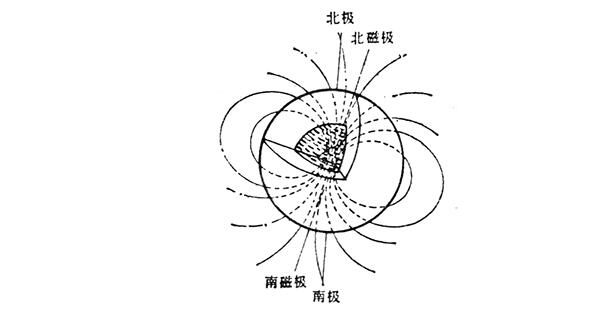On December 6, 1905, Norwegian explorer Amundsen explored the position of the north magnetic pole on King William Island. Interestingly, he discovered that this pole position has shifted compared with the position of the magnetic pole that was first determined by the British explorer John Rose about 60 years ago. Why does the magnetic pole also move? Will the “north” direction of the compass still change?
Many people use a compass to orientate, but do you know where the compass on the compass points; can you go to the north pole in the direction of the compass? can not! This way you can only go to the other north pole of the earth, called the magnetic north pole. It is near the north pole of the earth. So in human history and even geological history, is the position of the magnetic north pole fixed? no. For example, in 1955, the magnetic north pole was at about 70° north latitude and 100° west longitude, and the magnetic south pole was at 67° south latitude and 140° east longitude. In 1970, the magnetic north pole moved to 70.1° north latitude and 98.6° west longitude, and then went north every year. Move 8 kilometers and move eastward about 1.6 kilometers. To put it further, in the past 350 years, the latitude of the magnetic north pole has changed by 12°, the longitude has changed by 45°, the latitude of the magnetic south pole has changed by 14°, and the longitude by 29°. To put it further, in geological history, in the past 1.24 million years, the north and south magnetic poles have been inverted more than 100 times. That is to say, the north arrow at that time did not point to the north, but to the south. Is this the earth’s magnetic field joking?
To answer the question about the position of the earth’s magnetic poles, the reasons can be found from both the inside and outside of the earth. From the perspective of long-term changes in the annual average of geomagnetic elements, the magnetic pole position shift may be caused by the movement of the iron-nickel magnetic material in the semi-melted state inside the earth; due to this movement, the earth cannot become a uniformly magnetized sphere, and the magnetic poles are also Will keep moving.
In addition, from the perspective of short-term calm changes of geomagnetic elements (diurnal and seasonal changes), the magnetic pole position shift may be caused by the sun and the moon; when the solar activity is strong, the high-speed electrification from the sun’s outer chromosphere flares and the coronal solar wind The particle stream bends the earth’s magnetic field lines backwards and changes the conditions of the earth’s atmosphere ionosphere, thereby changing the earth’s magnetic field. According to calculations, this daily change can make the geomagnetic declination differ by 10′ every day. The moon’s gravitational pull on the earth can also affect the earth’s magnetic field, but the magnitude of the change is small, and the seasonal changes of the sun’s direct irradiance on the earth cause seasonal changes in the earth’s magnetic field.
In short, the change of the magnetic pole position is the concentrated expression of the change of the earth’s magnetic field, and there are two reasons for the change of the earth’s magnetic field, which must be considered comprehensively in order to have a satisfactory explanation for the movement of the magnetic pole position.






